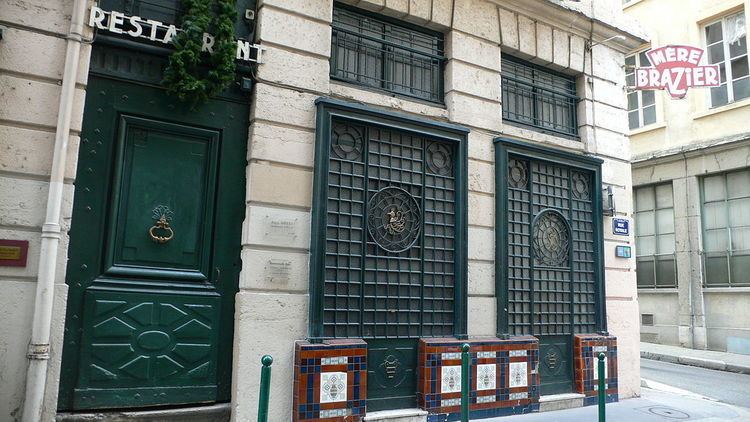Postal code 69001 | Construction start 18th century | |
 | ||
Former name(s) Rue de la ConventionRue de la DémocratieRue Nationale Location 1st arrondissement of Lyon, Lyon, France | ||
The Rue Royale is a street located in the 1st arrondissement of Lyon and was the main street of the quarter when it was created. It starts between the Place Servetus and the Rue de Provence and ends by joining the Grande Rue des Feuillants. There are many traboules closed which link the street with the Quai Lassagne and the rue d'Alsace-Lorraine. It is served by the line C of the metro, (Croix-Paquet station).
Contents
Map of Rue Royale, 69001 Lyon, France
History
When it was opened in 1870 after filling and construction, the rue Royale was the main and the nicer street of the Tolozan quarter created by Soufflot, the other streets being rue Dauphine, rue de Berri and rue de Provence. Many wealthy merchants began to live in the street and many restaurants opened. Originally, the street was a little longer, but the north was demolished in the mid 20th century in the goal of allowing the exit of the Tunnel de la Croix-Rousse. At the entrance of the street, there was a famous bathhouse called "Le Clavecin", built by Gary. After the death of French King Louis XIV, the street was named rue de la Convention, then in 1848 rue de Démocratie for a short while, and rue Nationale in 1850. In 1792, Mayor of Lyon Antoine Nivière-Chol (1744-1817) lived in the street. Musicologist and Chopin biographer Édouard Ganche (1880-1945) lived at number 5 from the mid-1920s to his death. He had there one of the most important private collection of Chopin-related objects in the world at this time.
There was a famous restaurant owned by the "Mère Brazier" aka Eugénie Brazier (1895–1977), an illiterate peasant born in the Ain, arrived in Lyon in 1914. She opened her own restaurant at No. 12 in 1921 and became the first three-star female awarded by Michelin (from 1933 to 1939). In 2007, the restaurant was bought by Mathieu Viannay.
Architecture
The rue Royale is lined by five-floor buildings and houses made of solid gray stone signed. There are several big doors, most of them are painted. The last building, at the west, has only one floor with a roof terrace.
An architecture firm located in the street has the same name as that of the street : Rue Royale Architects. There are a nightclub and the Théâtre de l'Anagramme.
Traboules
There are 14 traboules in the street, most of them are open (Nos. 5, 7, 11, 19 and 23 are closed but can be visited ; Nos. 11, 29, 31 and 33 are curved, others are straight):
